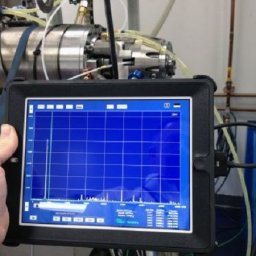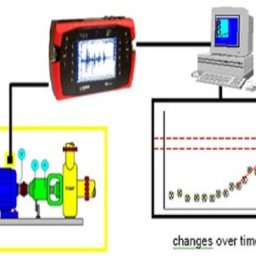Motor Current Signature Analysis (MCSA) are diagnostic technique that are being used to analyze motors, transformers, generators, alternators, distribution and other electric equipment.
This technology has the ability to test on line and off line electrical equipment and identify a variety of mechanical and electrical problems. These techniques can be used to analyze the driver, the driven load and the power supply. As a preventative maintenance tool, MCSA can be used to perform a one-time test or periodic testing to track and trend motor performance. MCSA allows for remote, non-intrusive testing of the equipment being monitored. The test analyzes the current waveform using complex mathematics. They are non-intrusive, invisible to the equipment being monitored and can be performed from remote connections such as Motor Control Centers (MCC).The information is captured and thereafter analyzed for the following possible defects:
- Phase imbalance
- Rotor bar faults
- Winding lamination defects
- Stator faults
Field studies have shown that up to 20% of all induction motors in use suffer from problems such as high resistance joints, cracked or broken rotor bars or air-gap eccentricities. Typically, starting a motor can induce five to six times the starting current in the rotor and stator windings. This can result in a number of problems upon start-up.
Effective techniques can be employed to detect and analyze critical electrical machinery to prevent failure and loss of production.
CEMTM Predictive maintenance team are able to offer several integrated methods to assess and track the condition of critical plant induction motors.
- Testing can be performed online without production interruption
- Combining MCSA with standard monitoring techniques such as vibration and temperature (multi-parameter monitoring) to increase decision making confidence
- Provide “on the spot” recommendations with no historical information needed
- Detect problems such as high resistance joints, cracked end rings, broken or cracked rotor bars and casting porosity or blow holes in die-cast rotors
- Testing can be done on a primary circuit or safely done on low voltage secondary switch gear



